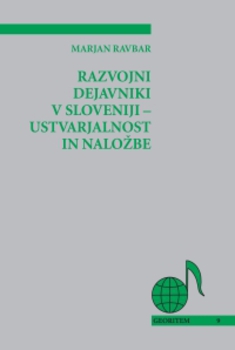Razvojni dejavniki v Sloveniji – ustvarjalnost in naložbe
Global scientific literature widely deals with analysis of regional innovative systems and their contribution to economic growth. Modern theories and empirical researches indicate strong correlation between the technical progress, creative human resources, toleration and capital investments. New investments are basic but not sufficient condition for balancing the developmental stimulation. Capital, linked with investment activities, natural (material) resources and human resources (work, knowledge, information) are main driving forces of the economic progress. New forms of investments today are strongly connected with population educational structure and knowledge, therefore investments do not occur everywhere, simultaneously and equally. Some forms of investments, especially the most extensive ones, originate from already established innovative centres, consequently the less developed areas (which cover the greater part of the territory) continually suffer from unprivileged starting-point. New investments usually coincide with new knowledge in the form of new products, innovations, new technological and organizing solutions. Capital therefore strongly intertwines with creative social groups, which undoubtedly have an impact on regional development. Accumulation or lack of investments in certain area is often the result of numerous factors: socio-economic differentiation, local factors changes, regional disparities and others.
Geographical analysis of both investments and creativity in Slovenia indicated almost identical distribution: strong concentration in Osrednjeslovenska development region with the two fifths of total Slovenian investments and more than half of all employments in creative professions but only a quarter of Slovenian population and 32 % of all employments. This imbalance is resulting in under-average level of investment activities and "creative" employments in the rest of the Slovenian regions. In Podravje development region the level is three times lower (13 %), following by Savinjska, Dolenjska and Gorenjska development regions. Particularly Dolenjska development region shows distinctive deficit in the number of creative employments. In Obalno-kraška and Goriška development regions the rate of investments and creative employments is 5 %, in the rest of the development regions this share is between 1 and 3 %.
Downloads

Series
License

This work is licensed under a Creative Commons Attribution-NonCommercial-NoDerivatives 4.0 International License.
